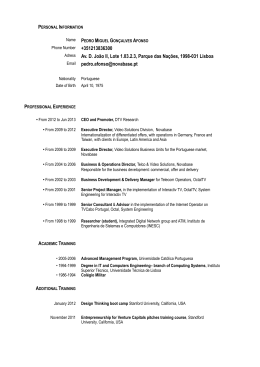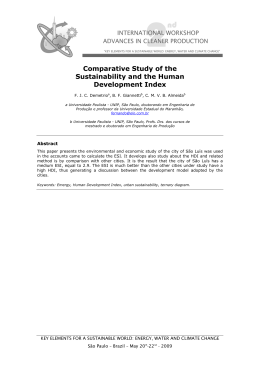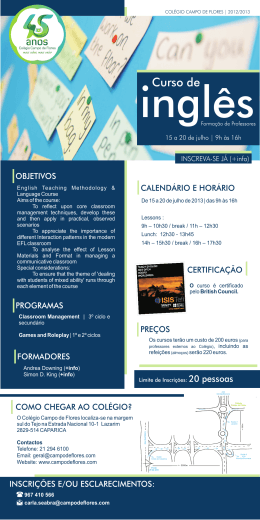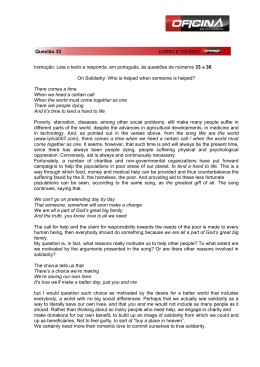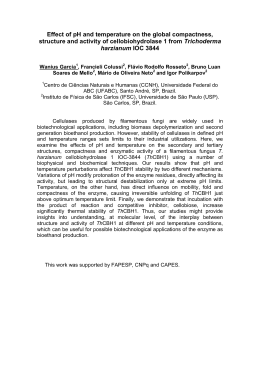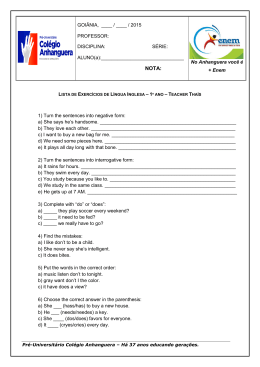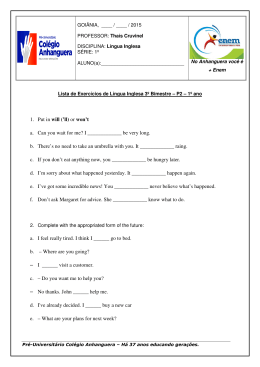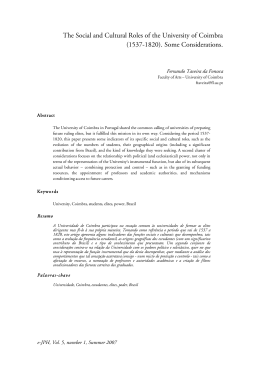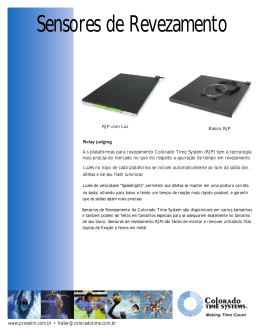The Arte de Grammatica da Lingoa mais vsada na costa do Brasil from José de Anchieta and some epochal linguistics notes Carlos Assunção – [email protected] Universidade de Ttrás-os-Montes e Alto Douro Portugal Maria do Céu Fonseca – [email protected] Universidade de Évora Portugal 1. The years of 1997 and 1998 paid tribute to the first worshipper of poetry in Brazil. The University of Coimbra honoured the name of Anchieta with a commemorative international congress celebrating the 450 years over the inauguration of the Colégio das Artes1. Some time before, another moment of high reflection had taken place in the city of São Paulo, during the international congress evocative of the 4th centenary of one of their founders’ death2. In both congresses, illustrious personalities “congregated”– thus implies the meaning of “congress”– around the literary and linguistic work, the missionary and ethnographic endeavour, and other multiple facets of a figure of the Brazilian 16th century, who burst into history by the fifties with the fruits that we know. The relevance of the Arte de Grammatica da Lingoa mais vsada na costa do Brasil (Coimbra, 1595) is unquestionable, considering the angle of the cultural interests put in march at the time of the first codification of our vernacular, which is legitimate to consider coeval, as it had a wide manuscript circulation since 1555. Graduated in the academy of the recently found Colégio das Artes, José de Anchieta is a representative of the Renaissance Humanism; and judging like this, we intend to place him in the scenario of a period from where the force lines of a programme of grammatical studies emerged, that, first of all, formed a philological school of the Latin and the vernacular. Two sorts of factors, related between them, played as catalysts of this programme: on the one hand, the expansionist campaign, a topic of Iberian matrix that should be 1 Actas do Congresso Internacional Anchieta em Coimbra – Colégio das Artes da Universidade (15481998), Tomos I-III, Porto, Fundação Eng. António de Almeida, 2000. 2 Anchieta 400 anos – Congresso Internacional (São Paulo, 18 a 20 de Setembro de 1997), São Paulo, 1998. 1 associated with the actions of our first grammarians, contemporary of the editorial production regarding the Discoveries3; on the other, the linguistic autonomy, an Italian import phenomenon fed by grammarians and men of letters of the time. We mustn’t forget the coincidence between the exaltation of the vernacular movement and the development of the European cartography. The drawing of the borders among the kingdoms, together with the chorographic and topographical surveys of the world’s regions, promoted the awareness of the linguistic individuality. Consequently, it seems to us that if the first grammatical texts of the Portuguese language, by Fernão de Oliveira and João de Barros, are used for national ends, mainly valuing the vulgar language, also the cultivation of the language coming from the other side of the sea by the hand of Anchieta, in the first grammar of the Tupi, will serve such purpose. The most prosaic reasons of its origin are known. The inexistence of books, a larger fault in Anchieta’s time, prompted the grammatical discipline to facilitate the Loyola’s Catholic apostolate. It is, therefore, a grammar destined "primarily to the missionaries in their catechetical activity" (Bechara. 2000: 519; also Pottier. 2000: 234), besides, in agreement with the linguistic politics of the Ignatius’s institute that Anchieta professed4. 3 Mainly from 1550, there were plenty of works concerning the expansion, that came out from Portuguese and foreign presses. Here we mention only two of the first ones that consigned in Portuguese the heroic Lusiad: the História do descobrimento e conquista da Índia pelos portugueses, by Fernão Lopes de Castanhede, rendered into French only two years after the publication of the first book in 1551, and later into German, Italian and English; and the Ásia or Dos feitos que os portugueses fizeram no descobrimento dos mares e terras do Oriente, by João de Barros, that, beginning to come out in 1552, had a partial edition in Latin, in 1554, and another about a lustrum later. 4 Anchieta was educated in a school dedicated to the study of foreign languages, in agreement with the consigned in the norms of the institute founded by Santo Inácio de Loiola: “Exercitar-se-ão em pregações e lições sacras de tal forma que o povo fique edificado (...). Procurarão dominar bem a língua vernácula, ter previstas e à mão as coisas mais úteis para tal ministério e servir-se de todos os meios próprios. Desta sorte melhor se desempenharão do ofício e com mais fruto para as almas”; “Quando num colégio ou universidade se projectasse formar pessoas para serem enviadas aos Mouros, ou aos Turcos, estariam indicados o árabe ou o caldeu; como para ir aos Índios, o indiano. O mesmo se diga de outras línguas que, por motivos análogos, poderão ser mais úteis noutras regiões”, in Constituições da Companhia de Jesus e normas complementares, Cúria Provincial da Companhia de Jesus, Lisboa, Livraria A. I., Braga, 1977, normas [402] e [447]. 2
Download
